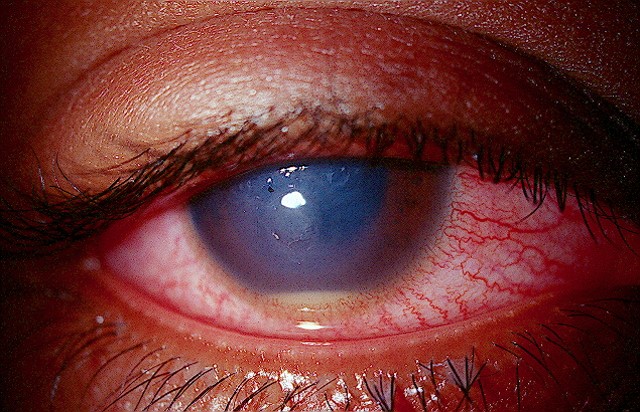 |
|
The data shows that a low level of post-op endophthalmitis was associated with 1% povidone iodine disinfection in combination with selective prophylactic antibiotic use and that post-op endophthalmitis incidence did not substantially differ from routine antibiotic use. Photo: Joseph Sowka, OD. Click image to enlarge. |
To avoid postoperative endophthalmitis after cataract surgery, two major preventive measures have been recognized over the last few decades. First, disinfection with povidone iodine was the most relevant prophylactic measure for a long period. Much attention has also been given to prophylaxis with intraocular antibiotics at the end of surgery. Researchers in the Netherlands conducted a retrospective cohort study using incidence data from the ongoing endophthalmitis register of the Rotterdam Eye Hospital, when intracameral antibiotics were used only during cataract procedures with occurrence of a posterior capsular tear, in comparison with results from cohorts described in the literature where routine antibiotics were used. Their findings, which were published in JAMA Ophthalmology, indicated comparable outcomes with antibiotic prophylaxis limited to complicated cataract surgery.1
All patients who had cataract surgery at the Rotterdam Eye Hospital between 1993 and 2022 were included. No cataract surgical procedures combined with other intraocular procedures were included. Among 56,598 cataract surgical procedures performed, postoperative endophthalmitis incidence was comparable when using 1% povidone iodine disinfection with selective antibiotic prophylaxis vs. antibiotic prophylaxis use in 37 reported studies.
“The difference in postoperative endophthalmitis incidence we detected between the period from 2000 and 2010 and the period from 2016 to 2022 is an indication that intracameral antibiotics were associated with effective results in cases of posterior capsular tear during phacoemulsification surgery,” the researchers wrote in their paper.
Such an indication may be preferred over routinely exposing large numbers of patients undergoing the most frequently performed surgical procedure in the world to prophylactic antibiotics.
“Although the routine use of prophylactic antibiotics in modern cataract surgery may still be a matter of ongoing debate, preoperative antiseptic preparation of the surgical field with diluted povidone iodine supports that discussion,” the study concluded.1
A commentary also published in JAMA Ophthalmology noted that “the pros of using intracameral antibiotics only in complicated cases include medicoeconomic reasons and reduction of overuse of antibiotics, which can be associated with microbe selection and antibiotic resistance. The cons include the incidence of potentially avoidable postoperative endophthalmitis in uncomplicated cataract surgery.”2
“Furthermore, the study authors found a greater rationale to disinfect before microorganisms enter the eye rather than to inject an intracameral antibiotic once they have entered,” the commentary authors wrote.
They concluded that this case series may raise more questions as to whether selective use of intracameral antibiotics might be equally effective when used routinely and that further assessment of this possibility would probably be worthwhile.2
1. van Rooij J, Nolte K, van de Vondervoort F, et al. Prophylactic intracameral antibiotics and endophthalmitis after cataract surgery. JAMA Ophthalmol. June 20, 2024. [Epub ahead of print]. 2. Daien V, Villian M, Chamard C. Intracameral antibiotics after cataract surgery—in which cases? JAMA Ophthalmol. June 20, 2024. [Epub ahead of print]. |


